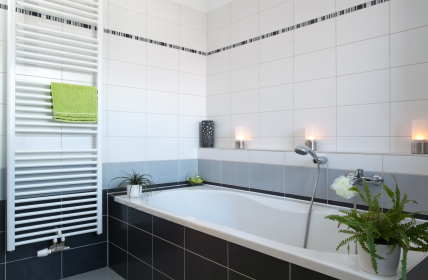
Ceramic tile is one of the most popular and versatile coverings used today. It can be used not only on floors, but also on walls. Ceramic tile creates a beautiful floor covering for your home, whether it be your kitchen, dining room, bathroom, or any other room of your home. You can even tile ALL of the floors in your home for a vibrant, durable, attractive look. Ceramic tile is also used on walls – from the bathroom to the kitchen backsplash, ceramic tile offers homeowners a unique tile that comes in a wide variety of styles and colors.
Ceramic tile has been around for centuries – but the process to make the tile is essentially the same today as it was years ago. Ceramic tile is clay that is formed into a shape, glazed and then baked. A closer look at how ceramic tile is made reveals more about the process.
Dust pressing, also known as dry pressing, is the process through which the clay is formed into a tile. Ceramic tile used to be formed by hand, but dry pressing makes the process faster and easier. Clay is mixed with other ingredients, such as water, and ground up to form a body slip. The body slip is the bottom of the tile – different than the glazed top of the tile. The body slip is heated and dried to remove most of the moisture, where it turns into dust.
The dust is put into a press that exerts pressure, which pushes the dust into a certain size and shape. The pressure gives it the tensile strength. This pressed product is known as the bisque. Once the dust is pressed into shape, the last of the moisture is removed. Next comes the glaze. This is the shiny surface of the tile and it is available in a variety of choices, including high-gloss and matte. Glazing is a typical part of the ceramic tile process, but it is not essential – tiles are available without a glaze.
The glazed tile is then put through a continuous kiln for baking. The heat from the baking gives the tile its strength – the higher the baking temperature, the stronger the tile. This baking process can be done as many times as needed to achieve a certain color or pattern.

For all of your Denver Hardwood Flooring needs visit our site today.